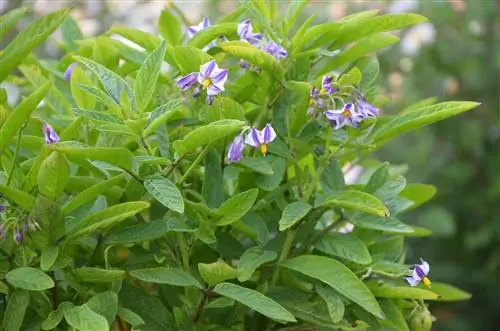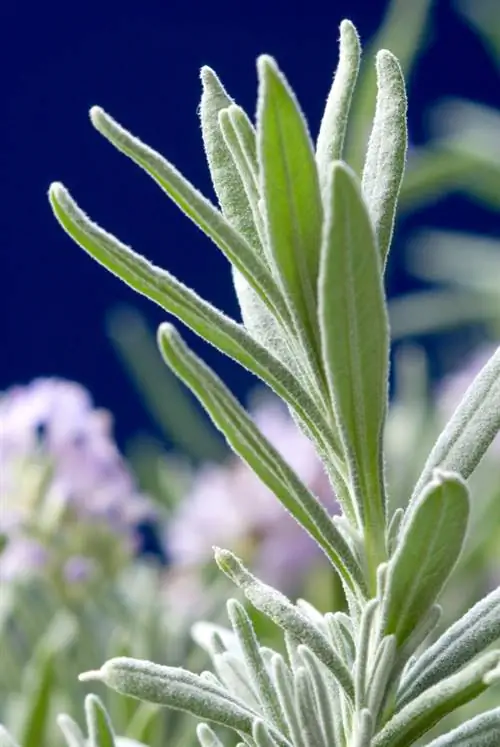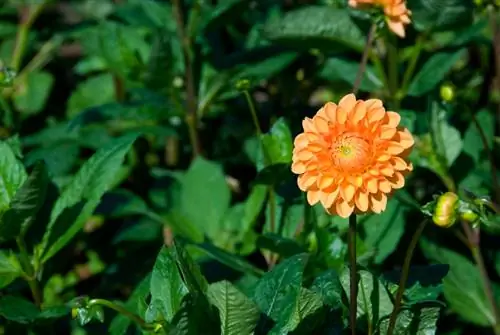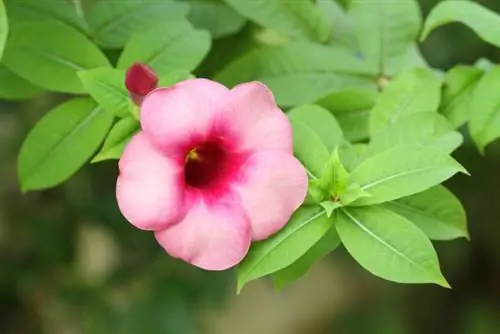- Author admin [email protected].
- Public 2023-12-16 16:46.
- Last modified 2025-01-23 11:21.
In the past, the edible fruits of the serviceberry were generally used in a variety of ways, but today the plant is mostly planted in many gardens because of its pretty flowers and impressive autumn color. If the plant remains flowerless, this can understandably cause a certain amount of frustration.

Why isn't my serviceberry blooming?
If a serviceberry does not bloom, it may be due to insufficient sunlight, problems in the root zone or an unsuitable planting container. Provide the plant with more light, prevent waterlogging and loosen compacted soil to promote flower formation.
Usually a question of location
Rock pears need locations with as much sunlight as possible for he althy growth. In contrast to many other plants, the undemanding rock pears do not die directly, even in full shade. However, they usually cannot form any flowers in such locations. If, on the other hand, rock pears are planted within a garden in full sun locations and in light partial shade, the preference for full sun locations is usually clearly shown by the number of flowers and fruits planted. In an emergency, non-flowering rock pears should be transplanted if possible, depending on the size they have already reached, or sources of shade should be removed.
Fix problems in the root area of a rock pear
It doesn't necessarily have to be due to a lack of sunlight if a serviceberry doesn't produce flowers even after several years in one location. Sometimes problems in the root area of the plant can also be identified as a trigger for the lack of flowers. If flowers do not form, check the following factors:
- whether there is waterlogging in the root area
- whether the plant was planted in extremely compacted soil
- whether other plants compete with the roots of the serviceberry for nutrients and space
Sometimes it can be the solution to the problem of a lack of flowering if a young serviceberry is dug up and finally replanted in an intensively loosened planting hole.
Troubleshooting the lack of flowering on a serviceberry in a pot
Even rock pears grown in pots do not always produce flowers as desired. Sometimes so-called rotary roots can be the reason for this problem. These usually form when the plants have been squeezed into a planter that is much too small. Transplanting into a generously sized plant pot often produces the desired result of lush flowering.
Tip
If a serviceberry that has been blooming with numerous flowers in previous years does not produce any flowers at all, this is neither a reason for panic nor for horticultural vigilantism with an axe. As happens with some types of fruit, climatic conditions can occasionally lead to a complete failure of the flower without any other influencing factors.






